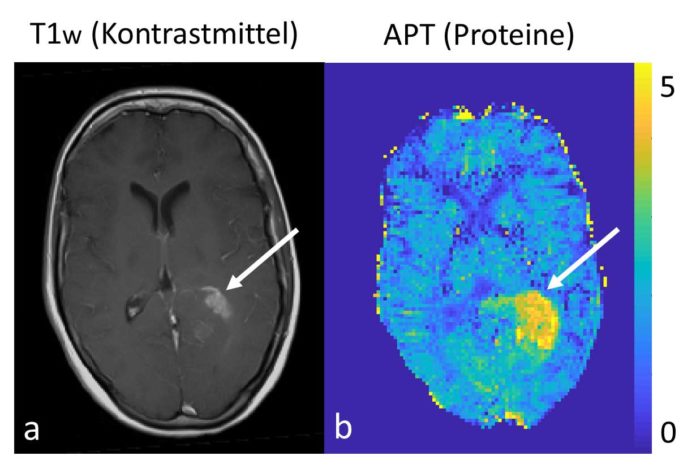Glioma is a broad category of brain and spinal cord tumors that come from glial cells in brain cells that support nerve cells. These tumors tend to grow and infiltrate into the normal brain tissue, which makes surgical removal very difficult — or sometimes impossible — and complicates treatment.
Some tumors are benign and can be removed completely by surgery. In others, chemotherapy and/or radiotherapy is necessary for addition to surgical removal.
Daniel Paech from the German Cancer Research Center (DKFZ) said, “In about half of all glioma patients, an extremely malignant form of the tumor is diagnosed. Malignant gliomas respond very diversely to treatment. In some of the cases, postoperative radiotherapy and chemotherapy are more effective than in others. And whether the tumor has in fact responded to treatment cannot be told before the first follow-up care exam six weeks after treatment ends.”
Selecting the best possible treatment strategy for the patient from the beginning would be advantageous to be able to assess a brain tumor’s aggressiveness and future response to therapy already at the time of diagnosis.
In a new study, Paech along with his colleagues from Heidelberg University Hospital used an extremely powerful 7-Tesla MRI scanner to image proteins in the brains of glioma patients. To do so, they exploited the so-called CEST effect, a chemical exchange effect between the proteins and free water in tissue. No contrast agents are needed for this examination.
If the MRI image at diagnosis shows that the tumor has a tendency to grow rapidly, it would be possible to choose, depending on other factors such as the patient’s age, a more intensive therapy from the start in order to improve the patient’s chances.
Paech said, “Cancer cells grow in an uncontrolled manner, producing proteins along the way in an equally uncontrolled manner. Our study shows that the protein signal measured in the MRI image is a biomarker that is associated with survival as well as with treatment response of patients: The stronger the protein signal, the poorer the prognosis.”
“If a 3-Tesla MRI machine can equally measure the elevated protein expression in the tumor, then our results may be used broadly to enhance diagnostics in glioma patients because 3-Tesla machines are available in many hospitals.”
The study is published in the journal European Radiology.
Other co-authors of the study include Daniel Paech, Constantin Dreher, Sebastian Regnery, Jan-Eric Meissner, Steffen Goerke, Johannes Windschuh, Johanna Oberhollenzer, Miriam Schultheiss, Katerina Deike-Hofmann, Sebastian Bickelhaupt, Alexander Radbruch, Moritz Zaiss, Andreas Unterberg, Wolfgang Wick, Martin Bendszus, Peter Bachert, Mark E. Ladd, Heinz-Peter Schlemmer.
